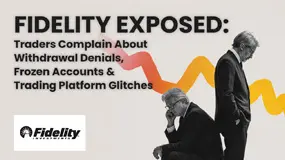简体中文
繁體中文
English
Pусский
日本語
ภาษาไทย
Tiếng Việt
Bahasa Indonesia
Español
हिन्दी
Filippiiniläinen
Français
Deutsch
Português
Türkçe
한국어
العربية
Using Trendlines in Technical Analysis
Abstract:Trendlines are a cornerstone of technical analysis, offering traders a visual guide to understanding market movements. By connecting specific price points, such as higher lows in an uptrend or lower highs in a downtrend, trendlines define the market’s trajectory.

Drawing Trendlines for Uptrends and Downtrends
For an uptrend, a trendline is drawn by connecting a series of higher lows (price troughs). This line acts as a support level, reinforcing bullish momentum. Conversely, in a downtrend, the trendline is drawn by connecting lower highs (price peaks), functioning as a resistance line that mirrors bearish sentiment.
When drawing trendlines, it is common to use the candle wicks (highs and lows) rather than the closing prices. This approach offers a clearer depiction of price movements. A breach of these trendlines often signals a potential trend reversal, making them critical for entry and exit decisions.

Key Rules for Using Trendlines
Two fundamental rules guide the use of trendlines:
1.Trading Along the Trendline:
When the price approaches an uptrend line, it often acts as a support level, offering traders an opportunity to buy near the line. Conversely, in a downtrend, the line serves as a resistance level, prompting sell positions near the line.
2.Breakthroughs as Signals:
A price breakthrough of an uptrend line often signals a sell opportunity, while a breach of a downtrend line suggests a buy opportunity. Analysts typically confirm these signals with specific percentage changes (e.g., 1% of the stock price) or minimum price movement thresholds.
These rules emphasize that valid trendlines act as psychological levels in the market. Any breach indicates a significant shift in market sentiment and requires traders to reassess their strategies.
Adjusting and Redrawing Trendlines
Trendlines are not static; they require adjustment when market conditions change. If a trendline is temporarily breached but the trend resumes, the original line may no longer be reliable and needs to be redrawn.

In some cases, a breakthrough signals the need for an entirely new trendline. For example, a price move that exceeds a downtrend resistance may indicate the start of a new uptrend. It is not just the line itself but the context of the trend that determines its reliability.
Practical Applications of Trendlines
Effective use of trendlines offers traders several benefits. For instance, buying near an uptrend line can secure a better entry price, while selling near a downtrend line minimizes risk. Additionally, monitoring trendline breakthroughs helps traders respond to potential reversals, ensuring timely adjustments to their strategies.
Disclaimer:
The views in this article only represent the author's personal views, and do not constitute investment advice on this platform. This platform does not guarantee the accuracy, completeness and timeliness of the information in the article, and will not be liable for any loss caused by the use of or reliance on the information in the article.
Read more

WikiEXPO Global Expert Interviews: Gustavo Antonio Montero: ESG in Finance
As WikiEXPO Dubai concludes successfully, we had the pleasure of interviewing MR. Gustavo, the Chairman and Founder of Carter Capital Management. (Sustainable Digital Assets Management) and Palmer Advisory and Consulting. Palmer is a global business that develops advanced fintech/digital technology solutions and works with Blockchain technologies.

Fidelity Exposed: Traders Complain About Withdrawal Denials, Frozen Accounts & Platform Glitches
Does Fidelity Investments prevent you from accessing funds despite numerous assurances on your requests? Do you witness an account freeze by the US-based forex broker every time you request withdrawal access? Do you struggle with an unstable trading platform here? Is the slow Fidelity customer service making you face forced liquidation? These issues haunt traders, with many of them voicing their frustration on several broker review platforms such as WikiFX. In this Fidelity review article, we have shared quite a few complaints for you to look at. Read on!

Exposing The Trading Pit: Traders Blame the Broker for Unfair Withdrawal Denials & Account Blocks
Did you receive contradictory emails from The Trading Pit, with one approving payout and another rejecting it, citing trading rule violations? Did you purchase multiple trading accounts but receive a payout on only one of them? Did The Trading Pit prop firm refund you for the remaining accounts without clear reasoning? Did you face account bans despite using limited margins and keeping investment risks to a minimum? These are some raging complaints found under The Trading Pit review. We will share some of these complaints in this article. Take a look.

M&G Review: Traders Report Fund Scams, Misleading Market Info & False Return Promises
Applying for multiple withdrawals at M&G Investments but not getting it into your bank account? Do you see the uncredited withdrawal funds out of your forex trading account on the M&G login? Does the customer support service fail to address this trading issue? Does the misleading market information provided on this forex broker’s trading platform make you lose all your invested capital? Were you lured into investing under the promise of guaranteed forex returns? These issues have become highly common for traders at M&G Investments. In this M&G review article, we have echoed investor sentiments through their complaint screenshots. Take a look!
WikiFX Broker
Latest News
2 Malaysians Arrested in $1 Million Gold Scam Impersonating Singapore Officials
Exness Broker Expands in South Africa with Cape Town Hub
Fraud Mastermind Zhimin Qian Sentenced to 11 Years for $6.6 Billion Bitcoin Ponzi Scheme
Is FXPesa Regulated? Real User Reviews & Regulation Check
Almahfaza Broker – 2025 Review: Safe or Scam?
Uniglobe Markets Review 2025: A Complete Guide to an Unregulated Broker
INZO Broker No Deposit Bonus: A 2025 Deep Dive into Its Offers and Risks
Global Guide to Finding Forex IBs/Brokers — Share Your Pick and Win Big!
Trump tariffs are helping drive U.S. beef prices to new highs
Consob Targets Political Deepfake “Clone Sites” and Unlicensed Platforms in Latest Enforcement Round
Currency Calculator



